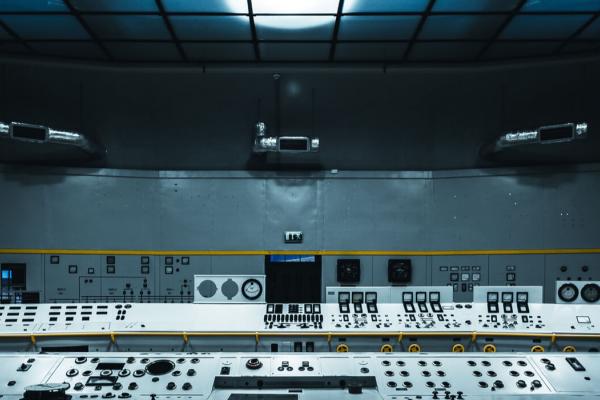IN A HISTORIC STATEMENT last November, Pope Francis categorically condemned not only “the threat” of nuclear weapons but also “their very possession.” In December, the Norwegian Nobel Committee awarded the Peace Prize to the International Campaign to Abolish Nuclear Weapons for its work on a new global treaty to prohibit nuclear arms. Already approved by the United Nations, it’s expected to enter into force this year. The Vatican was one of the first to ratify.
Here in the United States, however, it’s like we live in the Twilight Zone. President Donald Trump threatens to “totally destroy North Korea,” tweets about how his “nuclear button” is bigger than Kim Jong Un’s, and is moving ahead with plans to spend $1.7 trillion to rebuild the nuclear arsenal over the next three decades.
Trump’s bombastic rhetoric and impulsive tweets worry Democrats and Republicans alike, with Sen. Bob Corker (R-Tenn.) saying in October, “We could be heading toward World War III with the kinds of comments that he’s making.” In a sign of growing concern, the GOP-controlled Senate held the first congressional hearing on the president’s authority to launch nuclear weapons in 41 years. Sen. Chris Murphy (D-Conn.) said Americans are concerned that President Trump “is so unstable, is so volatile” that he might order a nuclear strike that is “wildly out of step” with our national security interests.
Yet there is a relatively simple step the United States could take that would 1) limit President Trump’s nuclear options, 2) reduce the risk of war, 3) respond to growing international calls to eliminate atomic arms, and 4) save a boatload of money.
It is time to retire our Intercontinental Ballistic Missiles (ICBMs).
The United States keeps hundreds of nuclear-tipped ICBMs in five states in the West and Midwest. Each missile carries a nuclear payload many times more powerful than the Hiroshima bomb, capable of killing hundreds of thousands of people. The Pentagon is now planning to build a new, deadlier generation of these missiles, which are housed in underground silos.
But these ICBMs are not meant to be launched—not even in a nuclear war. Their main purpose is to “absorb” a nuclear attack from Russia, acting as a giant “nuclear sponge.” They are designed to be destroyed in the ground, along with all the people that live anywhere near them. Such is the twisted logic of atomic warfare.
It never made sense to draw a nuclear attack toward the United States, rather than away from it. Even during the Cold War, analysts challenged this plan, claiming it was “madness to use United States real estate as ‘a great sponge to absorb’ Soviet nuclear weapons,” as Navy captain and strategic analyst Dominic Paolucci put it in the late 1970s.
The nuclear sponge is still with us, and now the Trump administration is planning to spend about $150 billion to double down and do it all over again.
That is, unless we stand up and say “no,” beginning with the good people of Colorado, Montana, Nebraska, North Dakota, and Wyoming. These states, and the entire country, would be better off if we did not have these weapons at all (we would still have 1,000 nukes on submarines and bombers). The “sponge states” could start by declaring that in five years they will no longer agree to host the weapons. The states could use that time to develop economic conversion plans to replace lost jobs with new ones. It is highly unlikely that any other state would offer to host the missiles, so this could be a step toward relegating them to the dustbin of history.
These five states, and the people who live there, have a larger nuclear target on their backs than other states, but these weapons endanger us all. Now is the time to get rid of ICBMs and throw away the “nuclear sponge.”

Got something to say about what you're reading? We value your feedback!

